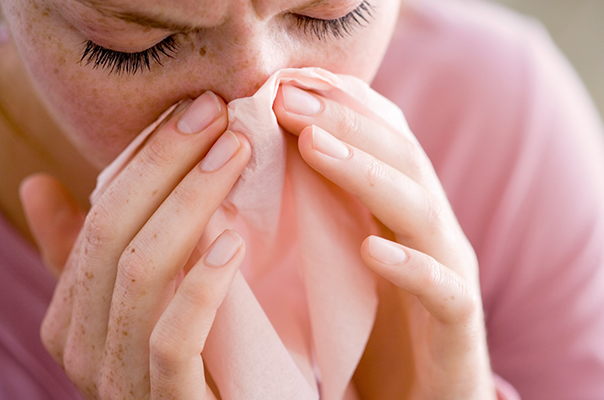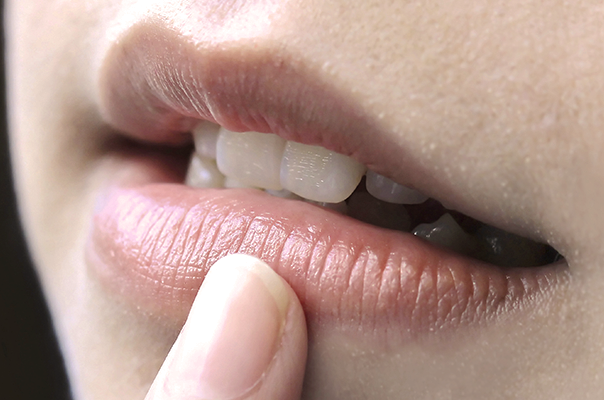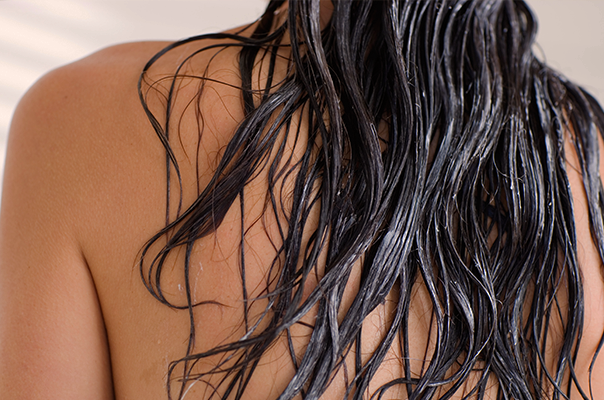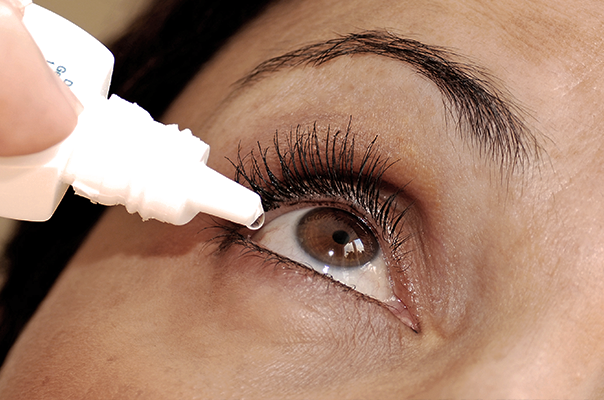Whipping winds, dry air, and chilly temperatures can really do a number on soft skin and hair. Cold air outside and central heat indoors can strip moisture from strands and pores, making hair rough and skin itchy and dry. But endure cracked hands no more: Items hiding in the back of your kitchen cupboard could just be the answer.
Body Talk—The Need-to-Know
Hair and skin aren’t just for looking pretty—they’re required for specific bodily functions, too. Humans lost body fur a while ago (thankfully), but we still have hair on our heads to keep the brain toasty and protected from occasional bumps. Skin isn’t only the barrier between the environment and our insides—it’s a living organ that’s responsible for keeping the body cool, protecting it against germs and “invaders,” and many other metabolic processes . It’s important to keep these tissues in good condition and working well all year long so they can do their jobs and keep us healthy and safe. Cracked, flaky, irritated, or inflamed skin is normal during winter, though it’s not exactly fun. If red, scaly, itchy skin lingers or is causing serious discomfort, be sure to visit a doctor; it might be a more seriousdermatological condition like dermatitis, eczema, or athlete’s foot. Barring more serious issues, there are a few strategies that can give the body a break when the mercury plunges:
- A 20-minute long, boiling-hot shower might feel great on a cold day, but stick to warm or lukewarm water for 10 minutes or less. Long exposure to hot water can strip moisture from hair and skin.
- When heading into the great outdoors, dress for the weather with a hat, scarf, and gloves to avoid windburn and prolonged exposure to cold air.
- At the grocery store, fill up a cart with foods full of healthy monounsaturated fats and omega-3 fatty acids, such as fish, nuts, olive oil, flax, sardines, and avocados.
- While at the market, load up on vitamin C-rich produce like citrus fruit and dark leafy greens.Vitamin C can help boost the body’s production of collagen, a protein that maintains skin and other connective tissues.
- It’s a good idea to drink plenty of water during winter, but there is actually no scientific proof that guzzling water can rehydrate scaly skin .
Read on for more specific cures and preventative measures to combat winter woes from itchy scalp to frozen fingers and more.
Smooth Sailing—Your Action Plan
1. Dry Skin
To cure dry skin all over the body, go big or go home. Mix a few drops of olive or grape seed oil in bathwater and hop in, or apply a thin layer of oil to the body after showering (and maybe wear some old PJs to bed). As weird as it may sound, adding a few cups of whole milk to bathwater can moisturize skin. The proteins, fats, and vitamins in moo-juice can help soothe rough skin. If feeling lactose-averse, the old chicken pox standby of an oatmeal bath can make red, irritated skin feel better . Immediately after an oil/milk/oatmeal bath, apply plenty of thick cream (or even Crisco or Vaseline for seriously damaged skin) and crank up the humidifier before hitting the hay. Slathering on lotion within three minutes of stepping out of the bath or shower is most effective for trapping in moisture.
2. Red Nose
The holidays are over, so there’s no reason to keep dressing up like Rudolph. When outdoors in cold weather, the blood vessels cut off circulation to the nose. After coming indoors the blood vessels dilate quickly, causing a rush of blood (and bright-red color). To bring the nose back to a normal hue, apply a warm—but not hot—compress to the skin for several minutes after coming indoors. Sometimes a winter cold and the tissues that come with it can make the nose raw and chapped, too. When the sniffles hit, use extra-soft tissues and blot the nose; don’t rub it. Apply a thin layer of moisturizing ointment or lotion to the sensitive area throughout the day.
3. Rough and Cracked Feet
Nothing screams “dead of winter” like gnarly, callused feet with cracked heels. Save some cash and skip the pedicure by exfoliating and moisturizing at home. Scrub calluses with a pumice stone in the shower once per week to slough off rough, dead skin. Moisturize feet, especially the heels, every day with thick cream—lotions containing lactic acid are especially effective—and wear cotton socks to bed. It may look nerdy, but sporting socks while snoozing can help creams absorb. Warmer feet means sweatier feet (ick), and moisturizers are most effective when applied to warm, damp skin. On the down side, wearing super toasty wool footwear can raise the overall body temperature, sometimes making it difficult to stay asleep all night long.
4. Itchy Dry Scalp
Nope, it’s not adult-onset lice. But a dry, flaky scalp is uncomfortable and just a wee bit embarrassing, too. Step one in preventing dandruff is to take cooler, quicker showers to reduce the scalp’s exposure to drying hot water. Think about switching to a dandruff or dry scalp specific shampoo. Before hopping in the shower, massage the scalp with Vitamin E, olive, or coconut oil. These oils replenish natural scalp oilsand can moisturize dry hair, too . Tea tree oil is also a popular treatment for fungal and bacterial infections like dandruff or athlete’s foot. Wash the hair and scalp with tea tree oil daily to cure a dry, itchy head naturally. Sometimes, the issue can be caused by product build-up—not winter weather. If you think this may be the case, rinse the hair with apple cider vinegar to clear out the gunk and then wash normally with shampoo.
5. Chapped Lips
Keeping a tube of lip balm in an easily accessible pocket is a good first step, but winter winds can take chapped lips to a whole new level. If lips are flaky, take a clean toothbrush and very gently exfoliate the skin to remove excess skin. Slather on beeswax or a lip balm with lanolin (a natural oily wax extracted from sheep’s wool!) and keep reapplying throughout the day. Lanolin is a natural moisturizer that softens skin and reduces evaporation, keeping the skin hydrated. If spending all day with animal product freaks you out, apply some Crisco (aka vegetable shortening) to lips. It’s 100 percent vegan and very safe if ingested. For seriously dry lips, apply honey or Vaseline to the lips for 15 minutes and then remove with a cotton swab dipped in hot water.
6. Brittle Nails
Dry air saps the moisture right out of nails and leaves them delicate and susceptible to breaks and tears. To treat them, apply olive oil or lotion containing lanolin to nails before bed and sleep with gloves on to help aid absorption. Dudes, it may be time to raid your mother/girlfriend/wife/sister/friend’s makeup drawer, because a thin coat of clear nail polish can protect brittle nails from the environment. Also consider adding biotin-rich foods (also called Vitamin B7) to the diet—this essential vitamin helps the body process amino acids and produce fatty acids. Vegetables (including carrots and Swiss chard) and protein sources including nuts and fish are good ways to pack in enough of the vitamin. Biotin is also very effective when taken in supplement form .
7. Rough Hair
Hair needs a little extra TLC during wintertime. Shampooing strips moisture from the scalp and hair, so wash strands every other day. Everyone’s hair is different—if washing once or twice a week is normal for you, consider adding some time between shampoos to take dry winter conditions into account. And don’t skip the conditioner—skipping the ‘poo and opting for a quick rinse and conditioning treatment works just fine to keep hair clean and moisturized. To prevent breakage or other damage, avoid blow-drying and brushing hair when wet because those locks are most delicate when waterlogged. If strands are really parched, comb hair with a few drops of olive oil and a wide-tooth comb after showering.
8. Dry Hands
It’s bad enough to have freezing digits, but cracked and painful skin on the hands is the icing on the cake. To prevent hands from drying out, apply moisturizer after hand washing and at least several times throughout the day. Keep a bottle of lotion by each sink in your home and in your desk at work. If hands are very dry, use cream instead of lotion because the former has a higher oil-to-water ratio. Wearing rubber gloves while washing dishes can prevent hands from getting dried out due to excess contact with hot water, too. To really rehab the skin on hands, use very thick hand cream right before bed and then slip on white cotton gloves—the enclosed space will help the moisturizer absorb into the skin.
9. Static-y Hair
The only thing worse than winter hat hair is fly-aways that won’t stay in a hat to begin with. A dried-out scalp produces fewer oils, which can make hair full of static. Don’t skimp on conditioner, and simulate natural scalp oils by combing a bit of vitamin E oil through the hair before bed to replenish moisture. If static is a major problem, consider switching up your grooming routine. Brushes with natural bristles help redistribute oils from the scalp to the rest of the hair and also conduct less static than plastic brushes and combs. Need a quick fix? Run a bit of lotion through strands or run an unscented dryer sheet (really) over the hair before heading out the door. During the winter, stick to cotton hats (which conduct much less static electricity than acrylic and wool).
10. Scaly Elbows
The skin over high-pressure joints like elbows, knees, and heels is thicker to cushion the essential bones underneath. It’s great to have some extra padding, but ashy, scaly elbows are uncomfortable and unattractive. The key to keeping elbows (and other rough spots) soft is to exfoliate once or twice per week and moisturize every day. Combine a scoop of sugar, a few glugs of olive oil and a drizzle of lemon juice to make a quick scrub. Even shorter on time? Halve a lemon, add a few pinches of sugar or salt, and rub the surface over rough skin. After exfoliating, rinse the skin and moisturize with a thick cream. If the dryness situation is really dire, apply a thin layer of petroleum jelly to the area before bed. When elbows are really itchy, soak them in milk or apply cold compresses. Thick, red skin with flaky white patches that doesn’t go away may be psoriasis. If none of the above treatments work, see a dermatologist for more specialized care.
11. Cold Digits
If fingers and toes are still cold despite wooly socks and gloves, it’s time for a different strategy. To encourage blood flow all the way to the hands and feet, keep the core toasty warm with plenty of layers. Avoid tight garments or jewelry at joints (hands, ankles, and wrists) that could constrict blood flow. Studies have shown that rosemary and gingko biloba can naturally improve blood circulation, too .
12. Irritated, Dry Eyes
Wind and dry air are not a good combination for sensitive eyes. Sporting sunnies on a sub-zero day might look weird, but the lenses can protect eyes from glare and wind. Keep a bottle of non-medicated saline tears or eye drops on hand and use it to refresh eye moisture when needed. Prevent irritation by keeping those well-moisturized hands away from the eye area.
13. Windburn
Kudos to those who enjoy the great outdoors even when it’s frigid outside. Protect sensitive skin by layering on thick face cream with a high SPF—the only thing worse than windburn is winter sunburn. If red windburn patches don’t go away, apply a thin layer of one-percent hydrocortisone cream on irritated spots as needed. This medicated cream contains steroids that reduce inflammation and stop itching in its tracks.
14. Dry Face
It’s unfortunate (but unavoidable) that the body’s most sensitive skin is always exposed to the elements. Definitely take some time this winter to give your mug a little extra lovin’. First thing’s first: During winter, avoid any face products with alcohol, and switch to a milder face wash and a thicker moisturizer. Need to mix up the routine a bit? Wash your face once a week with Greek yogurt. It sounds weird, but the lactic acid works as a gentle, non-abrasive exfoliator. For a moisturizing face mask, take a look in the kitchen before heading down the beauty aisle: Bananas, avocado, egg yolk, and milk can all make greatmoisturizing face treatments. Another good option? Whole grains and aromatic veggies contain selenium, a compound that gives skin the elasticity to make silly faces. Snack on quinoa, brown rice, onions, or garlic when skin gets tight and dry.




